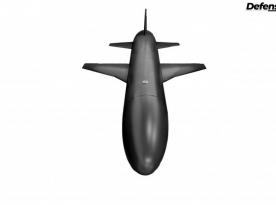Strengthening Ukraine's air defense requires a substantial number of surface-to-air missile systems and the missiles for them. Since the Ukrainian Armed Forces are already successfully operating the relatively outdated MIM-23 HAWK, attention could also be directed toward other air defense systems.
Occasionally, the name Roland surfaces. This is a European, German-French short-range surface-to-air missile system, which began development in the mid-1960s, with deliveries starting in the mid-1970s. It was developed by Messerschmitt-Bölkow-Blohm and Aérospatiale-Matra. Given that it served as the air defense asset for both air forces and ground forces, it could be mounted on the MAN 8×8 chassis, the Marder IFV, or the AMX-30 tank.
Read more: Indigenous Shmavic Drone is About to Hit Ukrainian Forces, Except It's Nothing Like Mavic At All
The most widely produced upgrade was the Roland II, which became all-weather capable and entered service in 1981. It allowed targets to be destroyed at a range of up to 6.3 km and at an altitude of up to 3 km. In 1988, the Roland III was introduced, featuring automation and an updated targeting system. However, due to the impending collapse of the USSR and cuts in defense programs, this version did not see wide deployment. It had a target range of up to 8 km and an altitude reach of up to 5 km, thanks to a new missile with increased weight, speed, and warhead capacity.

The guidance of the surface-to-air missile is carried out using radio commands in all versions. The Roland II's own radar allowed targets to be detected at a range of up to 15-18 km. Despite the objective obsolescence of this SAM system compared to modern digital models, its capabilities are still more than sufficient for countering Shaheds and even cruise missiles.
If we examine the distribution of the system during the Cold War, by 1991, Germany had more than 230 units, while France had over 180. The system was actively exported, with Iraq purchasing approximately 120 of these SAM systems in the 1980s. In total, about 620 units were produced across all versions. Additionally, more than 25,000 missiles were produced for these systems.
Therefore, it is reasonable to ask whether Roland systems are still available from Ukraine's key partners. However, the issue is that they were decommissioned, and that was quite some time ago. France made this decision in November 2006, while Germany did so a year earlier. This decision was made in the context of the planned end of service for these systems, with their formal replacement by the Crotale NG and Ozelot systems, respectively.

Despite the fact that, logically, decommissioned weapons should be stored, this did not happen due to large-scale cuts in defense spending. As officially reported by the German Ministry of Defense in response to a public request on April 16, 2024, after the end of their service, all Roland systems in Germany were disposed of. A small number, after demilitarization, are used as threat simulators for pilot training.
The same fate befell the Roland air defense battery transferred to Slovenia, which was sent for disposal in 2016 due to the loss of effective operational capability. As for the French systems, it is highly likely that they met a similar fate. At the very least, Spain, which had 18 Roland systems based on the AMX-30, decommissioned them in 2015.

Among the potential operators, only Qatar and Nigeria are among the known users of Roland systems. Qatar ordered nine units in the 1980s, while Nigeria ordered sixteen. However, their operational effectiveness is uncertain, given that the Roland system is no longer supported by its manufacturer. It is also important to note that Messerschmitt-Bölkow-Blohm ceased to exist in 1989, and Aérospatiale-Matra was dissolved in 2000, with both companies eventually merging into Airbus under separate conditions.
This is why Germany is prioritizing the development of new air defense systems, including the NNbS, which is expected to cost 1.23 billion euros and take five years to complete. In the mid-2000s, Germany decommissioned not only the Roland but also the MIM-23 and Gepard systems in one go.
Read more: Ukrainian Serviceman Tells About MIM-23 Hawk's Work Against Enemy Shahed Drones














